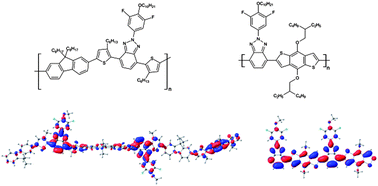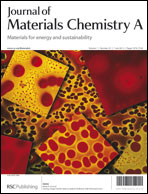Quantum chemical methods are useful for materials design to improve the performance of organic bulk heterojunction (BHJ) solar cells. However, more integrated studies of quantum chemical modelling and experimental results need to be performed to further improve both the materials design and understanding of the related photo-induced processes and photocurrent generation. In this work we investigated the internal relationship between the molecular structures of four donor–acceptor (D–A) copolymers (P1–P4) and their photovoltaic performances. The effects of the molecular structures on the generation of photo-induced charge carriers, exciton diffusion, dissociation and carrier transmission were compared by combining density functional theory (DFT) calculations of intrinsic geometric, electronic and optical properties with the results of electrochemical, spectroscopic, thermal, AFM and solar cell measurements of the polymers. The quantum chemical methods, which provided a tool to assess the electronic properties and conjugation length in the polymers, highly support the experimental results and therefore the usefulness of quantum chemistry for solar cell materials design.

You have access to this article
 Please wait while we load your content...
Something went wrong. Try again?
Please wait while we load your content...
Something went wrong. Try again?


 Please wait while we load your content...
Please wait while we load your content...